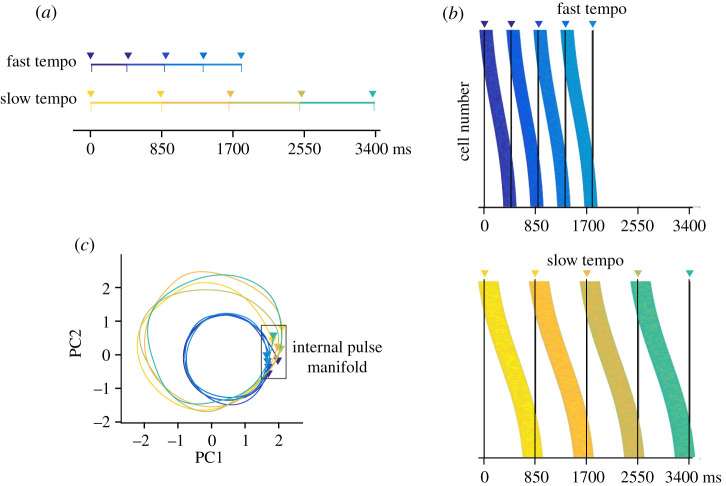Figure 2.
Neural population representation of an internal regular pulse during a tapping synchronization task. (a) Synchronization task. Monkeys are required to tap (triangles) synchronously with four brief pacing events (colour coded) of an external isochronous metronome (vertical lines). The stimulus onset asynchrony (SOA) creates fast and slow tempos. (b) Progressive neural activation patterns for fast (top) and slow (bottom) tempos. Each coloured strip consists of multiple horizontal lines, where each line corresponds to the onset and duration of the activation period for one cell. The simulated 200 cells are sorted by their peak activation time, generating for each produced interval an evolving population pattern of activation. The vertical lines correspond to the tapping times (triangles on top). Note that a similar population response profile is repeated in a cyclical manner for the four intervals (colour coded) and that the resetting of each moving bump corresponds to a potential internal pulse representation. (c) Neural trajectories during the synchronization task. The trajectory starts from the first tap, completes a cycle during every intertap interval and returns to the tapping manifold. We assume that the tapping attractor area in state space, highlighted by a box, is the internal pulse manifold which is invariant across durations. The metronome's tempo modulates the amplitude of the trajectories.

